GreenLamp Wins LIT Lighting Design Awards 2025 Spotlight Prize
GreenLamp has been awarded the 2025 LIT Lighting Design Awards Spotlight Prize, a special honour given to organisations that deliver remarkable work in their communities through lighting solutions. The Swiss nonprofit’s achievement highlights how thoughtful lighting design can address critical health challenges. GreenLamp’s sustainable solar energy systems now provide reliable illumination and power for remote clinics in Ethiopia, ensuring safer births and better health outcomes. In the words of GreenLamp’s president, Joanna Boyd:
“We are deeply honoured to receive the 2025 Spotlight Award from LIT Lighting Design Awards. This recognition shines a light on the importance of reliable, sustainable energy for women’s health. With every solar system we install, we help ensure that women can give birth safely, midwives can work with dignity, and communities can thrive. Thank you, LIT Lighting Design Awards, for supporting our mission to create brighter futures for women and babies in Ethiopia.”

Left – Solar panels on health-centre roofs // Centre – GreenLamps’s yellow solar suitcases powering lights and equipment // Right – Portable ultrasound unit in use
Since 2014, Greenlamp’s LIGHT Program has funded over 325 solar systems, illuminating maternity wards in rural and remote Ethiopian health centres and providing essential light for over 1.3 million births.
These projects are implemented in partnership with Solar Energy Foundation and the Ethiopian Ministry of Health to build capacity, ensure sustainability and local ownership.
At the same time, GreenLamp’s LEARN and LEAD programs support midwives through education, training, and leadership development. On the ground, the difference is clear: as one trained midwife recounts, “No more babies are dying because there is no light at the Health Centre.”
GreenLamp also invests heavily in empowering midwives and community leadership. The organisation provides scholarships and training for women from rural areas to become certified midwives who then serve in their home communities. The Hamlin College of Midwives is one of the training centres for these students. Through its holistic “Learn” and “Lead” pillars, GreenLamp ensures that graduates are mentors and role models in their villages. By combining solar lighting with midwife education, GreenLamp creates long-term, community-led impact across generations.
The Spotlight Prize funds will support GreenLamp’s expansion into two additional rural clinics that currently have no lighting. Each new solar lighting package includes:
_ 100-watt-peak solar panels (appropriately sized for each clinic)
_ A solar-powered refrigerator for delivery medicines like vaccines and oxytocin
_ An LED lighting kit (several 7-watt lamps and a 10-watt floodlight) for delivery and examination rooms
_ A fetal Doppler monitor to check unborn babies’ heartbeats
_ Patient thermometers and a refrigerator temperature monitor tag
_ Headlamps for midwives (portable lighting during procedures)
_ Installation, maintenance, and training support for the new equipment and staff
Left – New LED lighting system for examination and delivery rooms, with solar power that lasts longer and performs reliably in rural settings // Right – Headlamps with portable solar units provided to newly graduated midwivesThese components, including panels, fridges, lamps, and diagnostic tools, come with complete installation, maintenance, and midwife training support. This ensures the systems remain operational long-term and that newly graduated midwives are equipped with all the gear they need to deliver care safely.
“Supporting GreenLamp with the Spotlight Prize is exactly why we created this award,” said Astrid Hébert, Co-Founder of the LIT Lighting Design Awards. “It’s a privilege to recognise lighting initiatives that go beyond design: that save lives, empower women, and uplift entire communities. We are proud to stand behind this important work.”
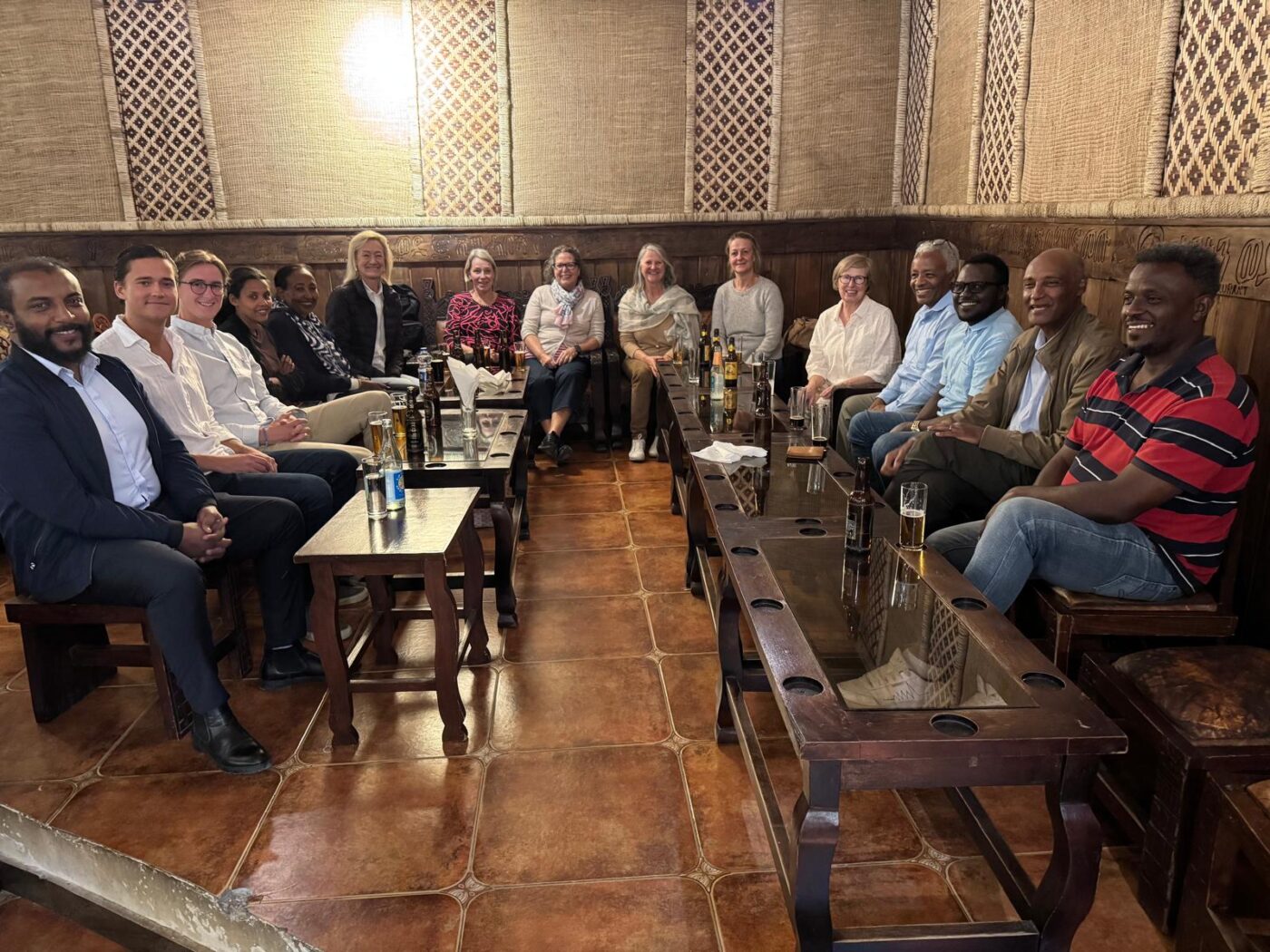
Members of GreenLamp’s Ethiopian and Swiss teams met in October 2025 to deliver training and visit several supported rural health centres
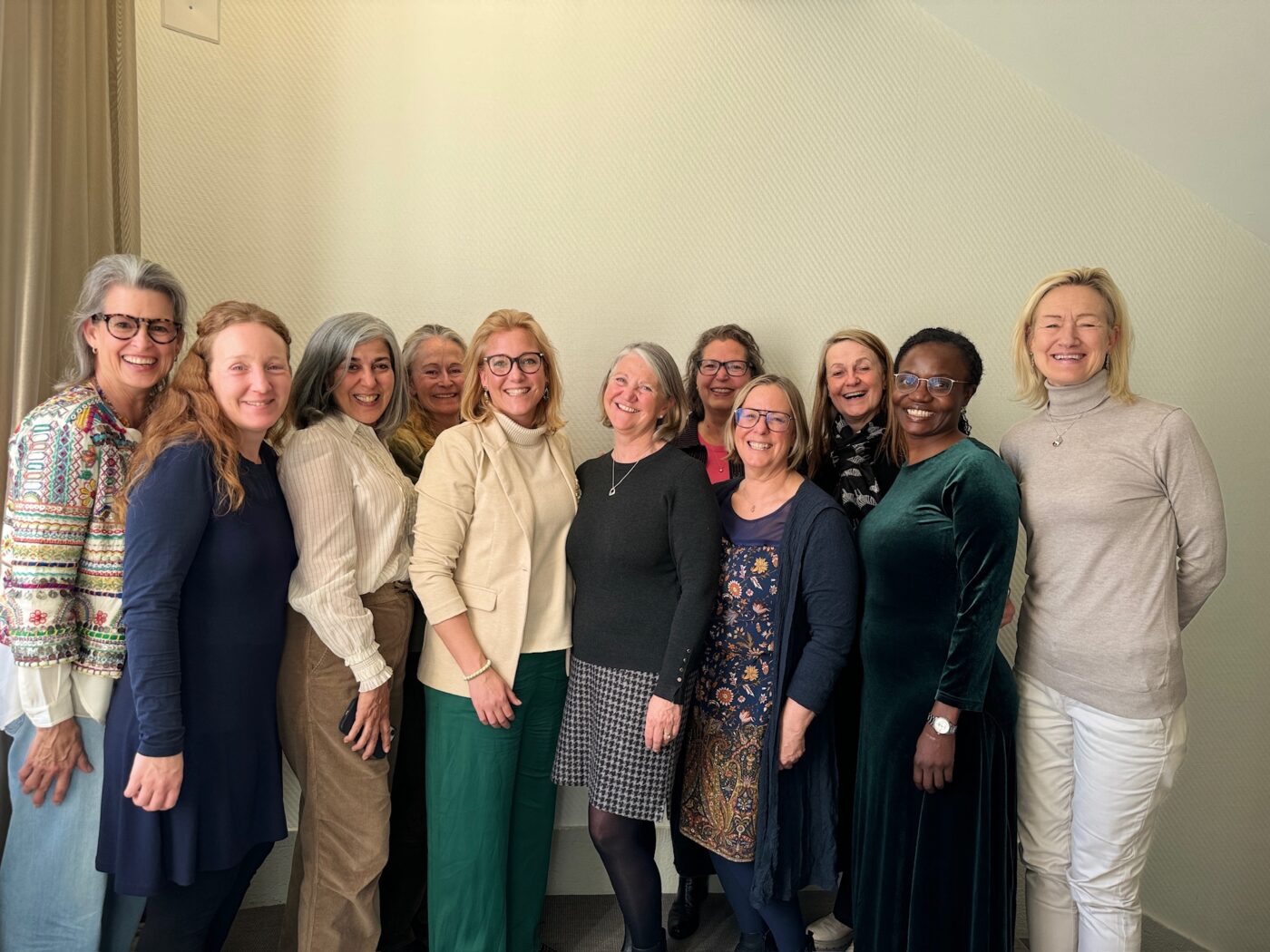
GreenLamp’s Board members and volunteers at the AGM in March 2025
The Spotlight Prize will be formally presented to GreenLamp at the LIT LightingDesign Awards ceremony in early summer 2026. This global awards gala will celebrate GreenLamp’s achievement alongside other winners, shining a light on innovations that improve lives. The LIT Awards team congratulates GreenLamp and looks forward to showcasing this life-changing work on the world stage.Photos Courtesy of GreenLamp
The LIT Lighting Design Awards proudly support an initiative to provide solar-powered lights to children in Gaza. In collaboration with Rebuilding Alliance, MPowered and Little Sun, this effort seeks to bring light and hope to children facing challenging conditions, enabling them to dream, study after dark, and experience a sense of security.
The LIT Lighting Design Awards is proud to announce that the 2024 Spotlight Prize recognizes the “Brighten the Future of Gaza’s Children” project, an initiative committed to making a meaningful impact and bringing light to a cause that will truly brighten lives.
Children in Gaza face immense challenges in continuing their education and engaging in play due to ongoing conflict and humanitarian crises. Many schools have been damaged or repurposed as shelters, leaving limited access to proper learning environments. Frequent power outages and lack of internet connectivity further disrupt education. Meanwhile, safe spaces for play are scarce, as parks and recreational areas are often unsafe or inaccessible. These challenges deprive children of critical developmental opportunities, compounding the emotional and psychological toll of living in a conflict zone.
In collaboration with Rebuilding Alliance, a nonprofit organization dedicated to advancing equal rights for Palestinian people and rebuilding war-torn neighbourhoods, the LIT Lighting Design Awards is funding the purchase of solar lights for children in Gaza. Thanks to the generosity of our supporters, the LIT Lighting Design Awards is donating 1500 solar lights. These solar-powered lights will serve as lifelines for children, helping them study, play, and feel safe despite the darkness around them. Rebuilding Alliance has been working on the ground in Gaza for years, rebuilding homes, schools, and vital infrastructure to promote peace through practical action. In partnership with Little Sun, a German company founded by artist Olafur Eliasson and engineer Frederik Ottesen and MPOWERERD, which created Luci, the first inflatable solar light with the goal of making an affordable clean energy product that people could use in any situation; Rebuilding Alliance is delivering solar lights to those in need, ensuring that the children of Gaza have access to safe, sustainable, and eco-friendly lighting.
Donna Baranski-Walker, Founder and Executive Director of Rebuilding Alliance, expressed her heartfelt gratitude for the support, saying, “Thank you again for your incredible support. We deeply appreciate your kind words and the generous support you’re offering to the ‘Brighten the Future of Gaza’s Children’ project. Your donation will have a meaningful impact, and we are grateful for your commitment.”
The 2024 Spotlight Prize shines a light on the “Brighten the Future of Gaza’s Children” project, a powerful proof that design and lighting can make a meaningful difference. This initiative is driven purely by humanitarian efforts, focused solely on improving the lives of children in Gaza, without any political intent. Every participant in the awards has contributed to this cause, with their support directly advancing this impactful mission. Astrid Hébert, Director of the LIT Lighting Design Awards, shared, “This project is a powerful reminder of how design and lighting can bring hope and make a lasting impact. We are proud to support the ‘Brighten the Future of Gaza’s Children’ initiative, which demonstrates the true power of light in transforming lives, especially for the children who need it most.”
The images featured in this article showcase previous donations, as the current shipment of our solar lights is still en route to the region. The LIT Lighting Design Awards is committed to keeping the public informed as they work through the necessary logistics. Once the lights are successfully shipped to Jordan, the organization will announce the distribution plans and share updates, including photos of the lights reaching their new homes in Gaza.
Image Credit: Rebuilding Alliance. Please note that these photos are for reference only and depicts a previous shipment of solar lights to Gaza and Rapha.
In a shining moment for the world of lighting design, DarkSky has emerged as the winner of the esteemed Spotlight Prize at this year’s LIT Lighting Design Awards 2023. Nominated by the discerning jury, DarkSky received the award for their outstanding commitment to a mission: preserving the darkness of the sky.

“We are honored to receive this recognition from the lighting design community, with whom we have much in common. Well-designed outdoor lighting and responsible, dark-sky friendly lighting are synonyms. Both are sustainable, energy-efficient, environmentally responsible and pleasing to the eye,” says Tom Reinert, President of DarkSky.
The Spotlight Prize was introduced in 2020 aiming to put the “spotlight” on an organization, association, project, or initiative carrying out outstanding work for its community. At the same time, this winner has to be a contributor to the Lighting industry. In the past years, the LIT Lighting Design Awards honored different projects including the LUCI Association and Women in Lighting.
Previously known as the International Dark Sky Association (IDA), DarkSky is a United States-based non-profit organization established in 1988 by founders David Crawford and Tim Hunter. The mission of the IDA is “to restore the nighttime environment and protect communities and wildlife from light pollution”.
The Birth of DarkSky
For one of the founders of DarkSky, Tim Hunter, observing the Milky Way was something natural that he could do through the trees surrounding his home. Gradually, he became aware that the stars started disappearing from urban and suburban areas due to increased light pollution.
In 1985, he received an unexpectedly large tax return. He decided to buy a piece of land in a dark-sky area for a large telescope. One thing led to another, and soon he was the owner of 20 acres of land 40 miles southeast of Tucson, Arizona, on a high grassland plateau at an elevation of 5,000 feet. This is how the Grasslands Observatory was born. During this time the Dark Sky Office at Kitt Peak National Observatory had been headed by Dr David Crawford. Hunter and Crawford met several times to discuss their concerns about lighting recommendations. What started off as a contentious discussion developed into friendship and a mutual goal of protecting night skies.
According to Hunter, light pollution is a relatively easy environmental problem to solve but no one is doing anything about it. He then suggested forming a non-profit organization devoted to combating light pollution.
What is light pollution?
Most of us are familiar with air pollution, water pollution, and soil pollution. But there is something else that can be a pollutant, namely light. While electric light at night can be a great thing, guiding us home, keeping us safe, and making our homes cozy, it also has another impact on the environment. Light pollution is the excessive or inappropriate use of outdoor artificial light. Furthermore, it is the human-made alteration of outdoor light levels that occur naturally.
It affects human health, wildlife behavior, and our ability to see stars. In this context, DarkSky educates the public and certifies parks and other places that have worked to reduce their light emissions.
When we over-light, fail to use timers or sensors, or use the wrong color of light, we can negatively affect so many parts of our world, including migratory birds, pollinators, and mammals. Research suggests that artificial light at night can negatively affect human health as well as increase the risk of depression, sleep disorders, obesity, and more. According to a recent paper, “There is an increasing number of research underlining the complexity of the correlation between light pollution and Alzheimer’s disease; however, additional studies to enhance the key tenets are required for a better understanding of this relationship.” Wasted light wastes money. Outdoor light emissions represent at least one percent of global energy use – contributing to the climate crisis. Globally we spend at least $50 billion in energy costs to produce light that escapes into space.
Components of light pollution include glare (excessive brightness that causes visual discomfort), sky glow (brightening of the night sky over inhabited areas), and light trespass (ligh falling where it is not needed). Unfortunately, light pollution is a side effect of industrial civilization. Fortunately, there’s a growing awareness that the ways we stave off the dark can actually have detrimental effects too. Most of the light pollution comes from cities, outdoor lights, streetlights, electronic advertising, parking lots, sports lighting, factories, greenhouses, gas production, and rural places.
Some of the ways to attempt to solve the problem of light pollution are following responsible lighting practices, passing dark sky-friendly legislation, and advancing scientific research in this field. These are also some of the practices that DarkSky has undertaken on their journey.
DarkSky – Who are they and what do they do?
DarkSky’s goal is to tackle these issues and create a better environment not only for the wildlife but also for us, humans.
Currently, DarkSky has more than 190,000 supporters, members, and advocates in more than 70 countries. They provide tools and resources for individuals, policymakers, and industry to reduce light pollution and promote responsible outdoor lighting that is healthy and functional.
“DarkSky looks forward to future opportunities to work with lighting designers and lighting manufacturers to develop and to deliver lighting solutions that restore the nighttime environment and protect wildlife and communities from the harmful effects of light pollution,” states Ruskin Hartley, CEO and Executive Director of DarkSky.
What made DarkSky stand out in comparison to the other nominees for the spotlight prize at the LIT Lighting Awards are some of their main practices. Their professional methods amongst others include education and advocacy efforts, building a strong sense of community through various events, and impacting the world by reducing light pollution. DarkSky tries to achieve this by certifying and conservating starry sky parks, communities, and other places around the world. Moreover, they certify commercial, industrial, and residential outdoor lighting that reduces light pollution.
The first method implemented to handle light pollution is certifying conserving the dark sky places. Currently, there are over 160,000 square kilometers of protected land and night skies in 22 countries on 6 continents, and the list grows every year. The night sky and the nocturnal environment are naturally and historically important resources worthy of conservation. Certified places are therefore required to use quality outdoor lighting, effective policies to reduce light pollution, and ongoing stewardship practices.
DarkSky has also been spreading the word about light pollution since 1988. They often organize conferences and trade shows that bring together a variety of policymakers, scientists, and government representatives amongst others to discuss night sky preservation. The DarkSky staff and volunteers also give talks, presentations, and exhibits at events such as the annual Light Fair, the European Symposium for the Protection of the Night Sky, and more.
Furthermore, DarkSky hosts an annual virtual conference each fall. It takes place over a 24-hour period, connection advocated and supporters of the dark sky movement for around the world. There is another event, called the International Dark Sky Week which will be held in April 2024. It aims to invite people from over the world to reconnect with he benefits of a dark, star-filled sky and learn how to reduce the negative impacts of light pollution on human, wildlife, and ecosystems.
One of the most important lessons that DarkSky teaches is adopting responsible means of lighting and illuminating spaces. It is no surprise that light brings huge benefits to modern society. It has revolutionized how we live and work outdoors. The modern society of the 21st century requires outdoor lighting for many reasons including safety and commerce. Therefore, DarkSky advances responsible outdoor lighting through policy solutions, public education, and scientific research. In this sense, responsible outdoor lighting allows people to see at night, conserves energy, and avoids harmful effects on wildlife. It is also useful, targeted, controlled, and warm-colored.
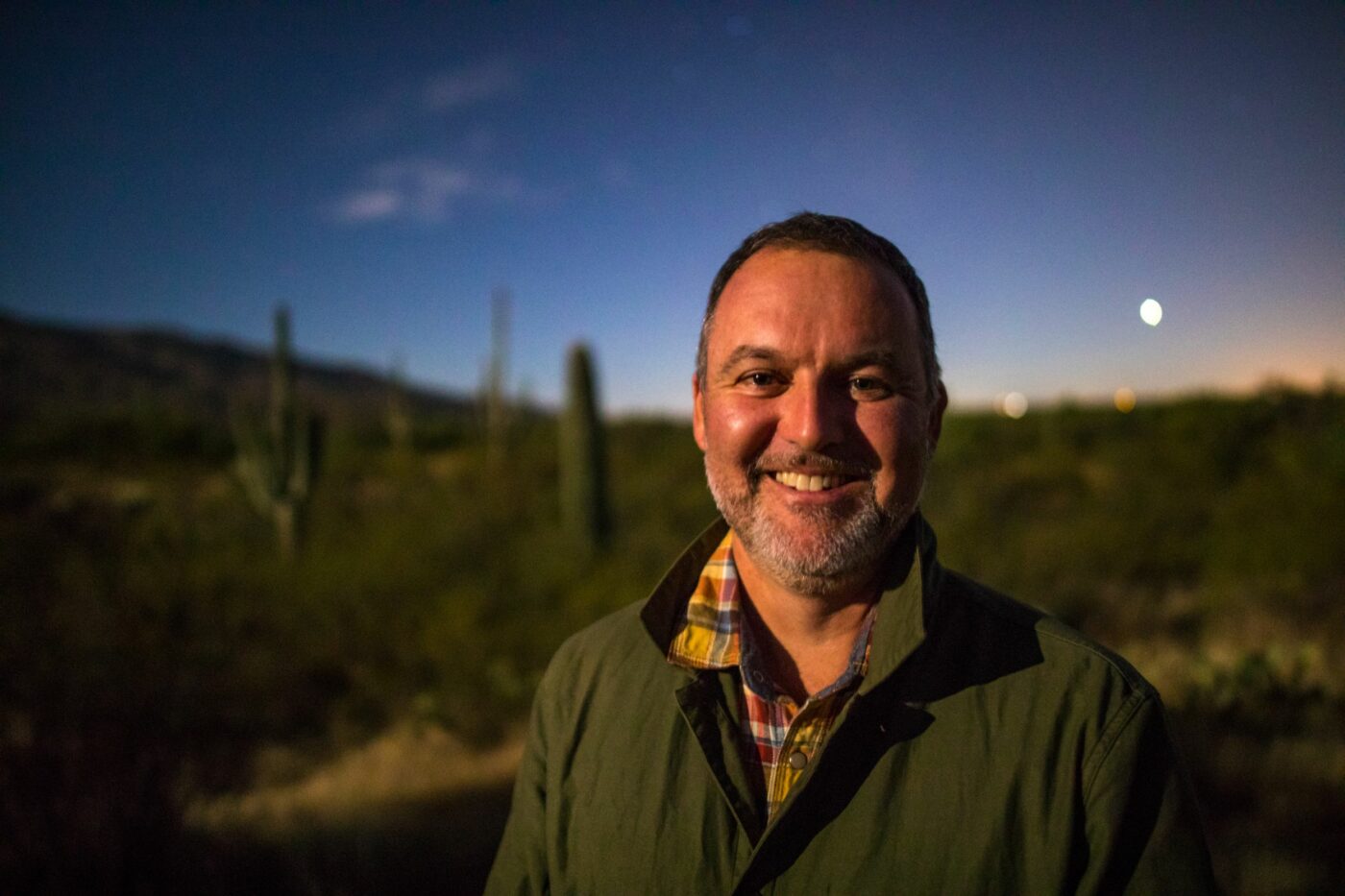
Last but not least, DarkSky‘s approved program provides objective, third-party certification for products, designs, and completed projects that minimize glare, reduce light trespass, and don’t pollute the night sky.
To achieve their goals DarkSky has partnered with different organizations such as CBS, National Geographic, Clear Sky Chart, Globe at Night, Under Canvas, Your True Nature, Selux, and many more. In this way, they have the opportunity to receive support and sponsorship for their programs and events. At the same time, it allows for further world reach and global education.
“DarkSky International strives for and promotes lighting practices that reduce the negative impacts of light pollution on wildlife, biodiversity, climate change, and human health. This recognition from the lighting design community beautifully illustrates the relationship between good lighting design and responsible dark sky-friendly lighting. Through responsible practices and innovative design we can combat the alarming trends of lighting pollution together,” concludes Hartley.
DarkSky’s receipt of the Spotlight Prize at the 2023 LIT Lighting Design Awards speaks volumes about their steadfast commitment to combat light pollution and champion responsible outdoor lighting practices. Their dedication to education, advocacy, and the certification of dark sky places positions them as leaders in the pursuit of sustainable and environmentally responsible lighting solutions. As DarkSky continues to light the way toward a harmonious coexistence of light and nature, this prestigious recognition underscores the crucial link between innovative lighting design and the promotion of responsible, dark-sky-friendly practices.
Text: Polya Pencheva
The prestigious LIT Lighting Design Awards is pleased to announce the recipient of the 2020 Spotlight prize – Women in Lighting.
The LIT Lighting Design Awards was created to recognize the efforts of talented international lighting product designers and lighting implementers. The organization believes lighting is both an art and a science, and that it is one of the most important elements of design. LIT was envisioned to celebrate creativity and innovation in the fields of lighting products and applications.
In the organization’s most recent news, LIT Lighting Design Awards is thrilled to announce its 2020 Spotlight prize – Women in Lighting (WIL). WIL is an inspirational digital platform that profiles women working in the field of lighting design. The community platform promotes each women’s achievements, narrates their career path and goals, celebrates their work, and elevates their profile in the lighting community.
“Spotlight is a special prize that rewards an organization or project which carries out remarkable work for its community, and for being a major contributor in the lighting industry,” says the founder of LIT Lighting Design Awards, Mr. Hossein Farmani. “Women in Lighting exemplifies our expectations for Spotlight, as the project supports the important work of women in the industry by creating an inclusive environment in the profession. We couldn’t be prouder of this initiative and look forward to seeing their continued work into the future.”
Women in Lighting has been founded by Sharon Stammers and Martin Lupton, the team now consists of 70 ambassadors from 70 different countries around the world who aim to create a supportive and inspirational environment for women in the lighting industry.
When being informed of the Spotlight prize, Sharon Stammers shared “The WIL team are proud to accept this special award on behalf of all people who have participated in the project, the entire global WIL network and its supporters. It’s great to have the project recognized in this way as one of the main reasons for starting it were to raise the profile of women in lighting and to inspire others. We feel that this is working…”
Women in Lighting Founders: Sharon Stammers and Martin Lupton
About Women in Lighting
International lighting designers and light activists, Light Collective launched the project, Women in Lighting on International Women’s day in 2019. It is a celebratory project that set out to create an inspirational digital platform for women working in the architectural lighting industry to promote their passion and achievements, narrate their career path and goals, celebrate their work and elevate their profile in the lighting community.
Women in Lighting consists primarily of a website – www.womeninlighting.com – with a database of interviews with women from around the world. Starting with lighting designers, the scope has expanded to include women in all aspects of lighting – education, journalism, manufacturing, art and research. The project has already gathered support from individual female designers in over 70 different countries. These “ambassadors” are a point of contact in each location for other women seeking to find out more about the project. Initially started as it was evident that female participation in conferences, committees, juries and panels were underrepresented, the main aim was that as there are approximately 50% of female lighting designers, they get 50% visibility.
Women in Lighting is not about gender inequality but about inclusivity and how this is beneficial to the profession as a whole. The project is supported by formalighting and archifos.
For more information about Women in Lighting, please visit https://womeninlighting.com.
The Studio School of Design (SSD) is an interdependent community of practice where experiential learning is embedded into a curriculum of design storytelling. It celebrates the full range of human cultural expression and identity and especially supports those who are and have previously been marginalized or excluded from the design professions. They see lighting design as a creative art form and are deeply invested in the potential of telling diverse and inclusive human stories through the medium of light.
The Studio School of Design’s vision is to increase collective knowledge and diversify access to the lighting design field across the places where we work. The school is a 501c3 Not-For-Profit community organization, seeking to provide equitable and inclusive low-cost classes both online and in-person to a wide-ranging pool of talented and motivated students.
This year, the 2022 « Spotlight » prize has been awarded to The Studio School of Design for its engagements towards education accessibility, diversity, and inclusivity. SSD is providing affordable (or free) learning environments and educational programs, preparing emerging lighting designers for the broad range of today’s lighting careers.
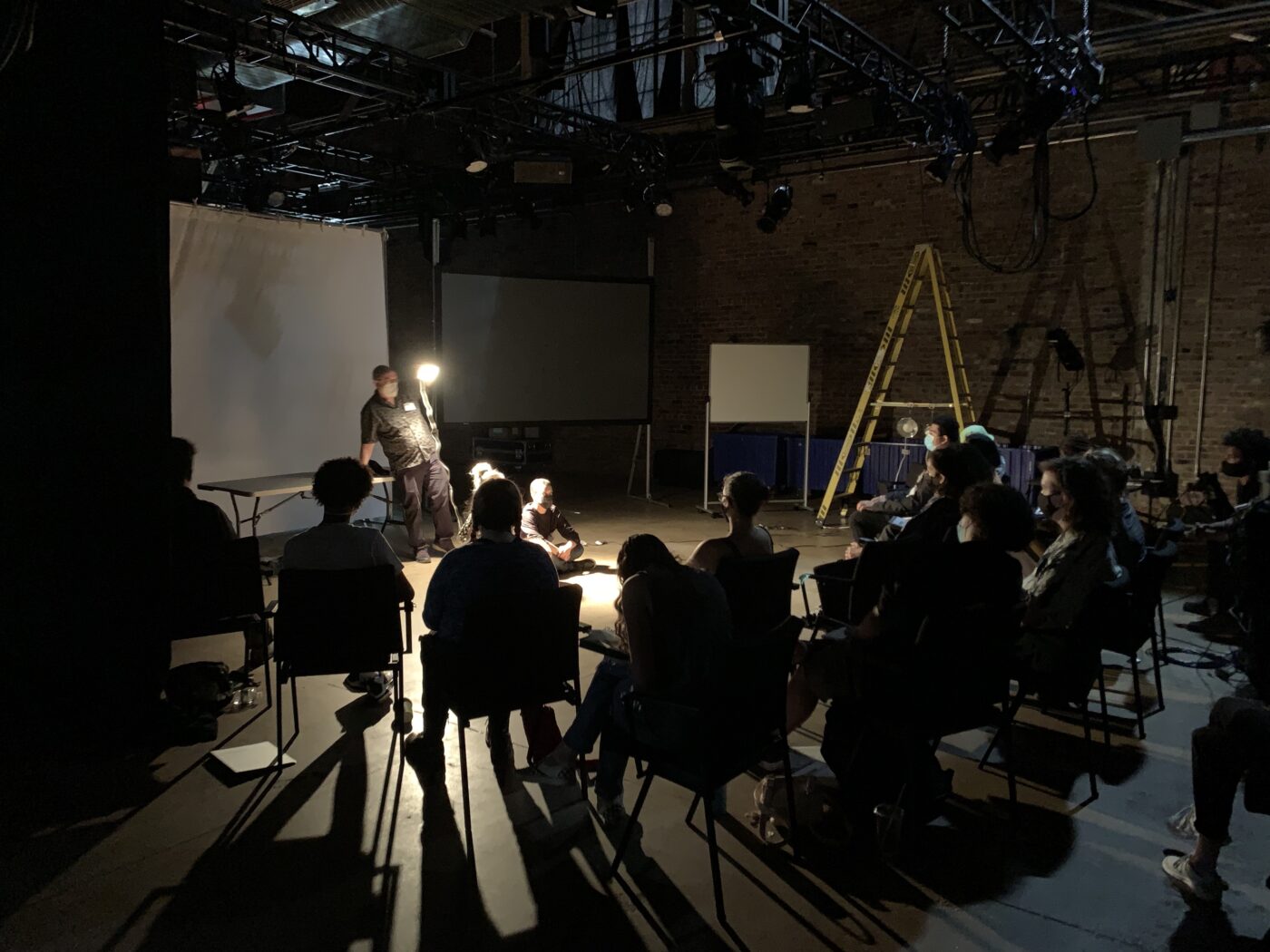
Photo by Rosalie O’Connor
The Studio School of Design began operations in the spring of 2021 with courses in Lighting for the Camera, Business Skills for Freelancers, Assisting with Large Scale Projects, and, importantly, a survey course of all the professions where designers work outside of the traditional theatre markets (65 students from 8 countries). They continued in the fall with courses in Video Content Creation and Pre-Visualization.
Additionally, they have offered free programs such as Pioneers of Light: The History of Women in Lighting Design (attended by over 80 online participants), Color and Light in a Mixed Source World, two Lighting Design Educator workshops for High School and University level instructors, and Networking events, both on Zoom and in person, to facilitate contact between designers, associates, directors, and choreographers. This spring (2023), the Studio School of Design will again offer Bob Barnhart’s highly successful Lighting for the Camera course, as well as courses in Vectorworks 3D and a Dance Lighting Intensive.
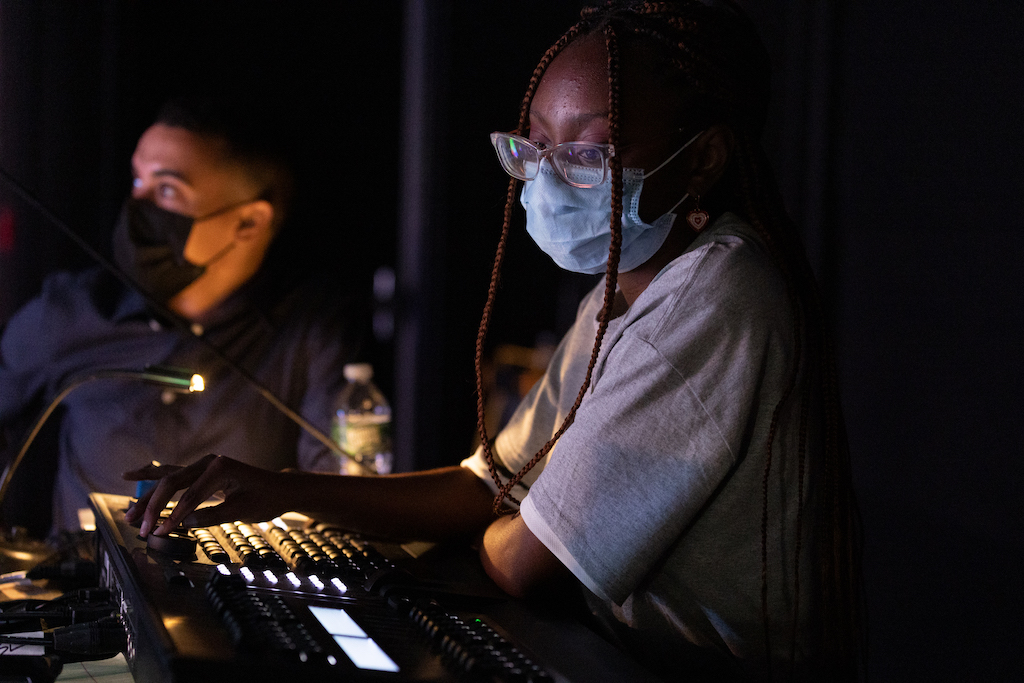
Photo by Rosalie O’Connor
One of their most exciting initiatives has been the launch of our High School Summer Workshop, a pilot program attended by 13 high school students, primarily from underserved school districts, for 4 days in the summer of 2022 (video of Students sharing their experiences). With the support of the Chelsea Factory and other donors, students participated for free in hands-on training in designing and telling stories with light. They are currently in the advanced planning stages for an expanded multi-week program targeting 40 high school students for the summer of 2023.
The Studio School of Design continues to offer online courses through Zoom, making course materials available to a large group of learners from around the world. They will continue to do so in the future and are currently looking for a space in Manhattan where they can offer face-to-face courses on a regular basis. Their future plans include developing a curriculum program that will provide in-depth study in a variety of fields and career paths for lighting designers.
In total, over 200 students/participants have participated in online and face-to-face programs since April 2021; 25% of online participants have received scholarships and all high school participants have attended for free.
The Studio School of Design is led by an outstanding group of individuals who bring decades of experience in education, design, non-profit management, media, equity, diversity, inclusion, law, and the lighting industry. Studio School of Design faculty come from the professional community and are focused on recruiting a wide range of highly qualified professionals.
We spoke with Studio School of Design President Mark Stanley and Vice President Clifton Taylor about their plans for the future of this inclusive and multicultural learning environment.
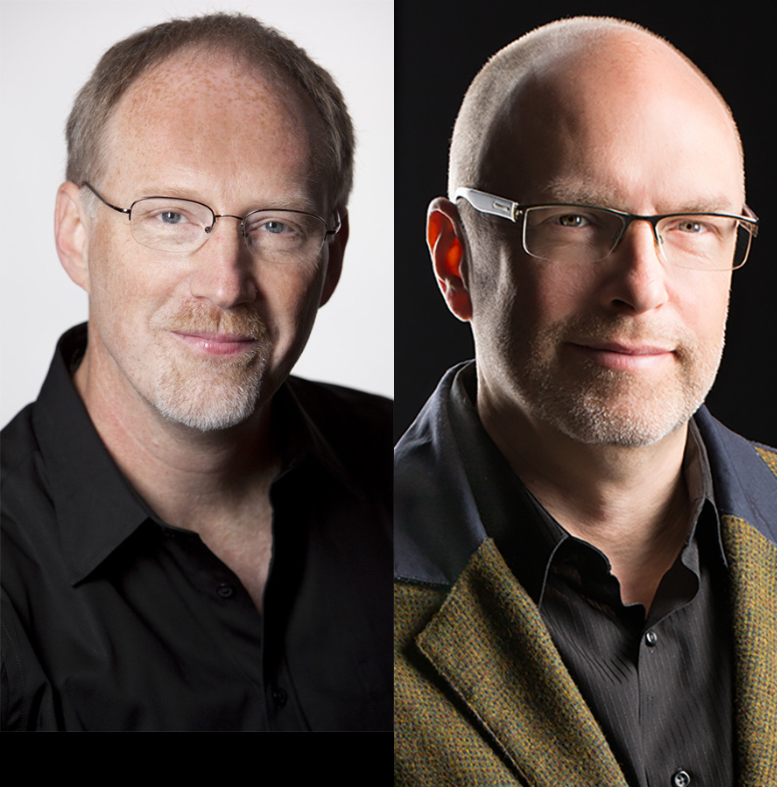
MARK STANLEY – Director, President (Photo by Rosalie O’Connor) and CLIFTON TAYLOR – Director, Vice President, Secretary
“As professional designers and educators, Clifton and I are intimately connected to the intersection of both worlds. Studio School reflects our commitment to providing opportunities for affordable, accessible training in lighting design and related fields. By expanding the pathways to a successful and more diverse, inclusive, education and also providing a gateway to the professional world, we enrich our community and the stories we tell through light and design“, shared Mark Stanley.
Talking about the ways the public and the industry can support their work, Mark added that the “Studio School of Design is a non-profit, tax-exempt organization. We rely on contributions to achieve our mission and provide the affordable, and often free, education that is our mission. As a young organization, we need the larger lighting and design communities’ support in order to expand and grow“.
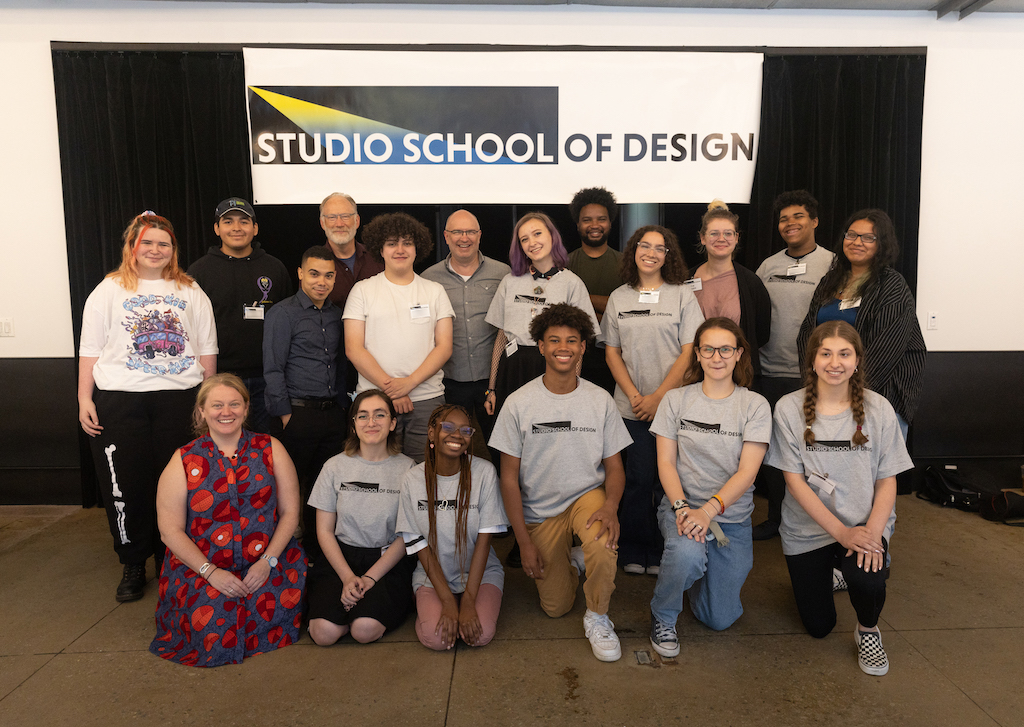
Photo by Rosalie O’Connor
Looking at this coming year’s program, Mark added that “When it comes to their upcoming projects, this spring they are offering 3 courses online: Lighting Live Events for the Camera led by Bob Barnhart, Advanced Vectorworks 3D Drafting, led by Nick Solyom, and a Dance Lighting Intensive, led by Mark Stanley. In addition, Studio School of Design offers networking opportunities and educator training at both the high school and university levels. In the summer of 2023, they will expand their High School Summer Intensive in Lighting Design to a two-week program with the goal of reaching 40 high school students. In addition, they will offer their popular Associates and Assistant Lighting Designer course as well as Business Practices for Freelancers.”
About Mark Stanley: Resident Lighting Designer for New York City Ballet, Mark Stanley has designed over 220 premieres for their repertoire including Paul McCartney’s Ocean’s Kingdom. He has worked with choreographers around the world including Peter Martins, Alexei Ratmansky, Susan Stroman, Christopher Wheeldon, Justin Peck, William Forsythe, Kevin O’Day, Susan Marshall and many others. His designs are in the repertoire of nearly every major ballet company in North America and Europe and his designs for George Balanchine’s The Nutcracker and other ballets and operas have been seen on Live from Lincoln Center and Great Performances. Mr. Stanley previously served as Resident Designer for the New York City Opera. His theatre work includes the Kennedy Center, Long Wharf Theater, Goodspeed Opera House, Ordway Music Theater, Paper Mill Playhouse, Maurice Sendak’s Night Kitchen and off-Broadway. Mr. Stanley heads the Lighting Design Program at Boston University and is on the Board of Directors of the Hemsley Lighting Programs.
About Clifton Taylor: For over 34 years, Clifton Taylor has created lighting, projection and scenic designs for theater, dance and opera companies around the world. He has also designed a number of unique concert music events for major orchestras, solo musicians and large-scale venues. His work has been commissioned on Broadway, Off-Broadway, regionally, and in seventeen countries outside the US. Clifton teaches design as an associate professor at UNCSA with additional extensive experience lecturing at NYU, the New York Choreographic Institute, and LDI. He has also had academic appointments at the Juilliard School, The University of Iowa, and the Royal University of Fine Arts in Phnom Penh Cambodia. He has a long-standing interest in education and is also a current MA candidate in the Adult Education Program at ECU. Clifton is the author of the book on color for lighting designers: “Color and Light, Navigating Color Mixing in the Midst of an LED revolution” which was published by Ones and Zeros Media.
You can learn more about the Studio School of Design at studioschoolofdesign.org.
Los Angeles, CA – The prestigious LIT Lighting Design Awards is pleased to announce the recipient of the 2021 Spotlight prize is “LUCI Association” (Lighting Urban Community International).
The Spotlight Prize has been introduced in 2020 to reward and put the “spotlight” on an organization, association, project, or initiative that carries out remarkable work for its community and has a major contribution to the Lighting Industry.
Created in 2002 at the initiative of the City of Lyon (France), today, LUCI is a non-profit organisation bringing together over 70 member towns and cities worldwide that use light as a tool for social, cultural and economic development. It also includes over 50 associated members from the lighting industry, design agencies and research institutes.
“We are really delighted and honoured to receive the LIT 2021 Spotlight Prize. At LUCI, we strongly believe in city-to-city collaboration, exchange, learning and co-creation to improve urban lighting and quality of life in cities. As LUCI is about to turn 20 years young, this comes at a perfect time to recognize the Association’s contribution to the global urban lighting community!” said Mark Burton-Page, General Director of LUCI.
Through the organisation of international events and conferences, and by piloting lighting projects and research initiatives, LUCI helps cities harness the potential of light to create sustainable and people-focused urban spaces.
AGM Tartu © Annika Hass TAVA – LUCI AGM Tartu © Annika Hass TAVA
What are the core missions of LUCI and how it supports cities :
© L_Oritsland – © City of Rotterdam photo EricFecken
LUCI Association activities, publications and events:
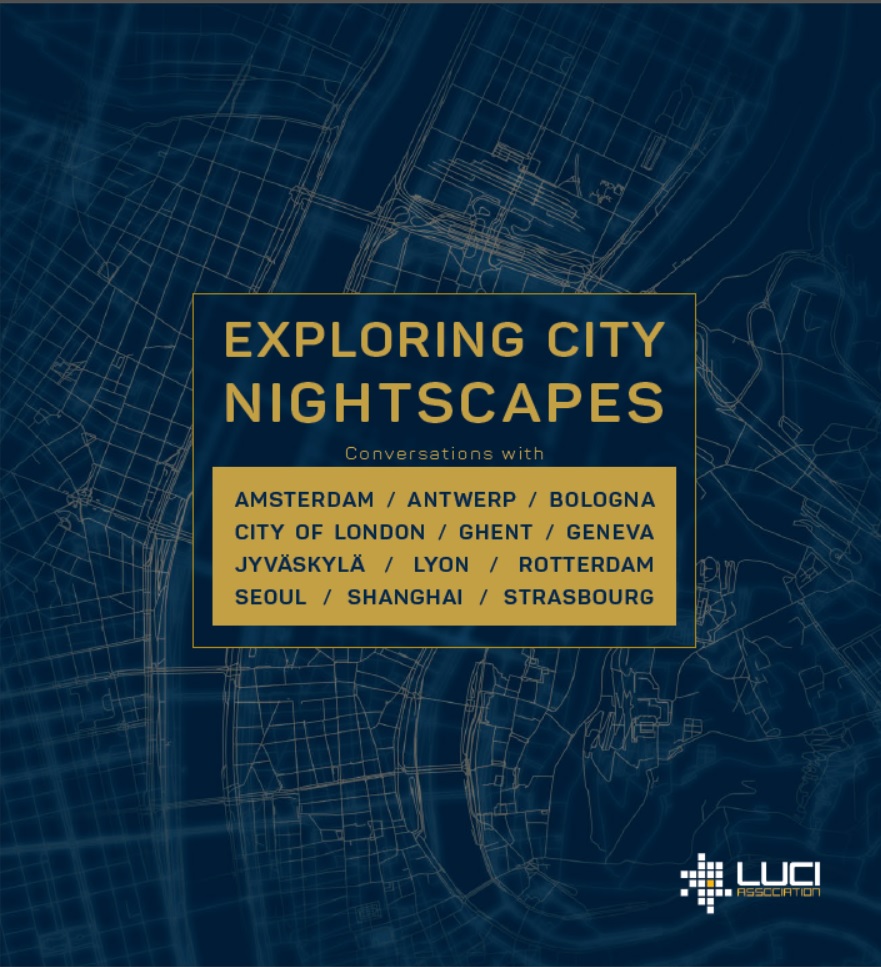 For more information on the LUCI Association please visit the LUCI website and social media accounts: Facebook, LinkedIn and Twitter.
For more information on the LUCI Association please visit the LUCI website and social media accounts: Facebook, LinkedIn and Twitter.